Saving time and money on your landscape can be as easy as installing the right plants.
Native plants are more drought and stress tolerant, so they require less water and maintenance than non-native varieties. They will also thrive better on your property. There are several tree, shrub, grass, flower and groundcover native plants to choose from.
Here are 23 of the best native plants to consider including in your commercial landscape design or installing on your sustainable Texas landscape.
Native Shade Trees
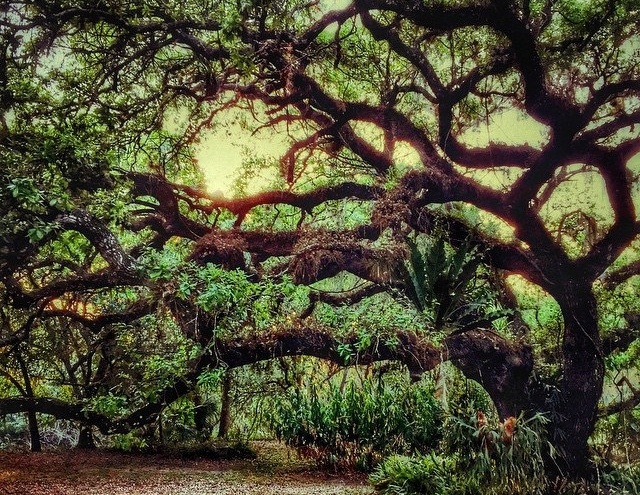 Summers can be harsh in Texas, and shade trees can help protect turf and other foliage from the sun.
Summers can be harsh in Texas, and shade trees can help protect turf and other foliage from the sun.
Live Oaks (evergreen) can be planted in any region around early fall. You shouldn’t plant them near sidewalks or parking lots because of their large root systems.
The trees grow fairly slow, reaching 30 to 50 feet tall with a 50-foot spread. They need full sun.
Cedar Elm (deciduous) should also be planted in the fall and need full sun. They grow at a moderate rate, topping out at 25 to 50 feet high with a 25 to 35 foot spread. The leaves turn yellow before dropping.
A good screening tree, the Eastern Red Cedar (evergreen) is good in areas from Austin to East Texas. This tree grows quickly and should be planted in early fall. It needs full sun and grows tall, but not very wide.
Native Ornamental Trees
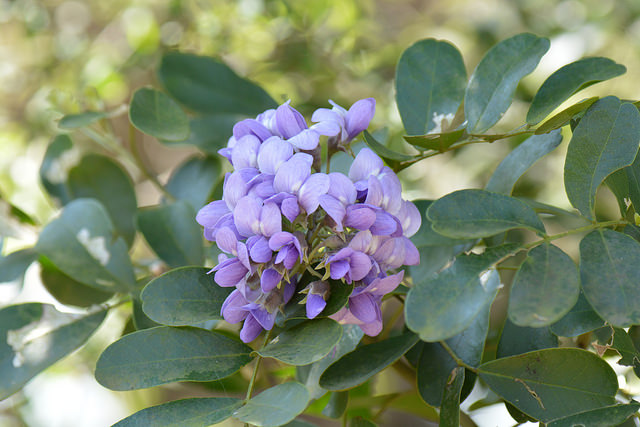 If you want a tree that can provide some color and appeal to your landscape, you should check out these ornamental trees.
If you want a tree that can provide some color and appeal to your landscape, you should check out these ornamental trees.
You can install Texas Mountain Laurel (evergreen) in any region in the state, but they do best in Dallas, Austin and San Antonio. The tree has fragrant purple blooms in early March that last about three weeks.
It’s actually one of the few ornamental trees that flowers and is evergreen. It’s best to plant them in early fall in areas with sun or part shade. They grow very slow — reaching 10 to 20 feet tall with an 8 to 12 foot spread — which makes them more expensive than other trees.
Best in central Texas, Desert Willow (deciduous) grows quickly and has flowers spring through summer — although, the flowers and leaves can be messy. It gets 15 to 25 feet tall with a 15 to 25 foot spread. The desert willow should be planted in sunny areas in early fall.
The Mexican Redbud (deciduous) provides excellent color in the spring, but it only lasts three to four weeks. The tree grows 12 to 15 feet high with a 12 to 15 foot spread. It needs sun to part shade and should be planted in early fall.
Native Shrubs
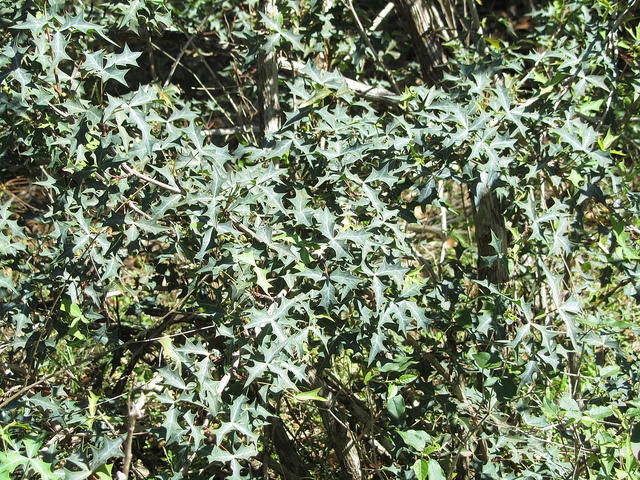 Add some structure and eye-catching foliage to your property with shrubs.
Add some structure and eye-catching foliage to your property with shrubs.
A good alternative to hollies, Agarita (evergreen) blooms with yellow flowers and red berries February to April. The shrub has tough, prickly leaves, so these shouldn’t be used in areas where there will be high levels of pedestrian interactions.
They grow 3 to 6 feet high with a 3 to 6 foot spread, and they need sun to part shade. You should install them in early spring or early fall.
For areas east of Austin to Houston, try Flame Acanthus (deciduous). They have red-orange flowers during the summer through fall and attract hummingbirds and butterflies. They have a 3 to 4 foot height with a 3 to 4 foot spread. They need sun to part shade and should be planted in early spring or fall.
Texas Sage (evergreen) provides massive amounts of purple flowers several times during the growing season. They should be planted in early spring or early fall in full sun, and they have a 4 to 5 foot height with a 4 to 5 foot spread. Texas Sage is best for Central Texas to the Valley, but it can be planted in Houston as well. It’s an all-around great shrub.
Native Perennials
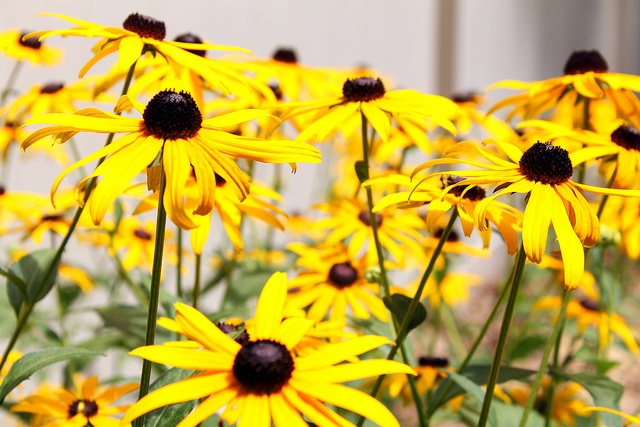 When you want plants that last more than a year, try these native perennials.
When you want plants that last more than a year, try these native perennials.
A favorite for many, Black-Eyed Susans (deciduous) are good for landscapes in Central Texas to Houston. The perennial blooms with large, yellow flowers throughout the summer.
You should plant them in early spring or fall, and they must be cut back in the winter. Black-Eyed Susans can grow 1 to 2 feet high with a 1 to 2 foot spread.
Esperanza (deciduous) blooms spring through fall with large, yellow flowers. They do best if you plant them in early spring or fall and need full sun. You must cut them back to the ground each year. These work for all regions and grow 4 to 8 feet high with a 4 to 6 foot spread.
You can also enjoy colorful blooms with Texas Lantana (deciduous), which can be planted in all regions. It blooms summer through fall with orange and yellow flowers. It needs full sun and must be cut back each year. You should plant it in early spring or fall. It reaches 3 to 5 feet high with a 4 to 6 foot spread.
A good flowering plant for shady areas is Rock Rose (deciduous). It should be planted in early spring or fall and works for all regions. It has pink blooms during the summer and needs sun to shade. Rock Rose grows 2 feet high with a 2 foot spread.
Native Prickly Plants
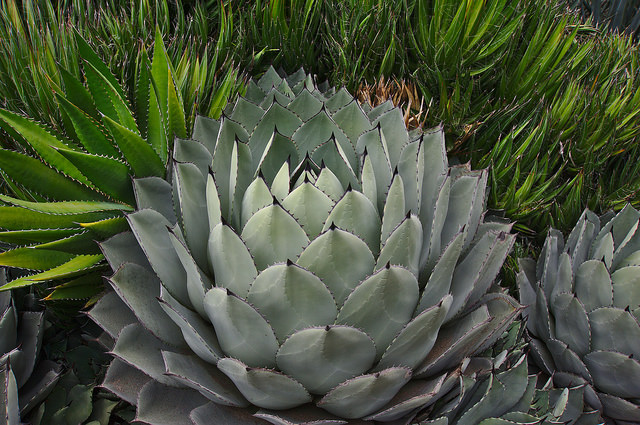 While these plants are eye catching, they are spiky, so it’s best if you look at them from afar.
While these plants are eye catching, they are spiky, so it’s best if you look at them from afar.
For unique colors, install Century Plant (evergreen). The leaves are a blueish-gray color. It blooms with one very tall flower but dies afterward. At the end of the leaves are large thorns, so keep these plants away from pedestrian areas.
They need mostly sun areas, but they can handle some shade. They reach 6 feet tall with an 8 to 10 foot spread.
Add a pop of color with Red Yucca (evergreen). It has small red flowers on large stalks that droop over, and it blooms throughout the summer. You can plant these anytime, and they work in all regions. It’s best to keep them away from pedestrian spaces. They grow 6 feet high with a 4 foot spread.
As the name implies, the Prickly Pear Cactus (evergreen) isn’t one you’d want to touch. The cactus does best in Central Texas and can be planted anytime. It’s a very hardy cactus that grows natively in many areas. The cactus blooms late spring to summer with yellow flowers and needs full sun. They reach 3 to 4 feet tall with a 3 to 4 foot spread.
Another plant for the central part of the state is Texas Sotol (evergreen). It has flowers that come out on large stalks in early summer. The leaves are lined with thorns, so keep them away from pedestrians. They can be planted anytime and need full sun. They also reach 3 to 4 feet tall with a 3 to 4 foot spread.
Native Ornamental Grasses
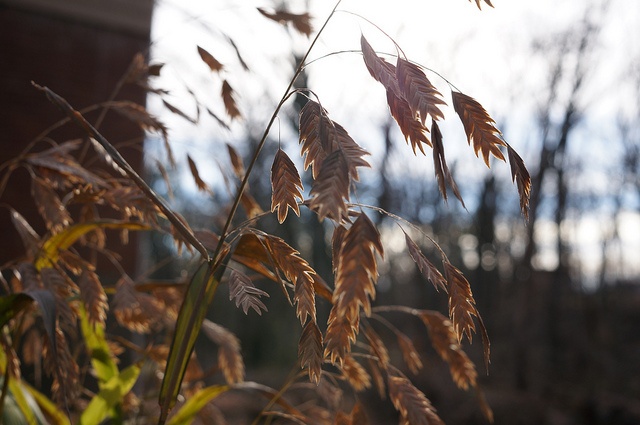 You can add texture and color with ornamental grasses. Plus, they are low-maintenance and reduce the chance of soil erosion.
You can add texture and color with ornamental grasses. Plus, they are low-maintenance and reduce the chance of soil erosion.
Although best in Houston, Inland Sea Oats can be planted in any region in early spring or fall. It doesn’t technically flower, but it has ivory seedpods that start green in the summer and change to brown in fall.
The grass needs part sun to shade. Inland Sea Oats reach 2 to 4 feet high with a 3 to 6 foot spread.
Good in any region, Big Muhly has feathery seed heads that appear in the fall. The grass needs full sun, and it’s best to install it in early spring or fall. It grows 3 to 4 feet high with a 3 to 4 foot spread.
Another one you can plant in any region is Gulf Muhly. It is best to install the ornamental grass in early spring or fall. Gulf Muhly has pink feathery seed heads during the fall that provide excellent color. It’s best in full sun, but it can handle some shade. It can reach 2 to 2 ½ feet high with a 2 to 3 foot spread.
All of these ornamental grasses must be cut back each year.
Native Groundcovers
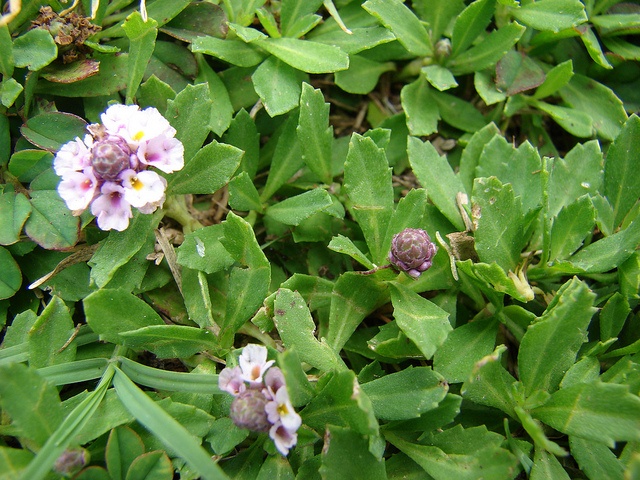 To help prevent soil erosion and cut back on maintenance time, install native groundcovers. Here are a few that will work in any region across Texas.
To help prevent soil erosion and cut back on maintenance time, install native groundcovers. Here are a few that will work in any region across Texas.
Frogfruit (deciduous) is an attractive groundcover that spreads rapidly. It has small white flowers and is a good host for butterfly larva. Frogfruit should be planted in early spring or fall.
An evergreen, Horseherb is most useful in shade to part-shade areas. It competes with turf grasses, so it needs to be maintained. Horseherb blooms all year, but the flowers are small and visually insignificant. You should install it in early spring.
Silver Ponyfoot (evergreen) should also be planted in early spring or fall. It spreads out like carpet and has an interesting blue-gray color.
Go Native
Whether you are renovating or starting fresh on your landscape, use native plants to save water, money and time — and make the property more sustainable.
Request a consultation today. We’ll meet to learn more about your property and its challenges and come up with a comprehensive plan to take care of all of the details for you.


